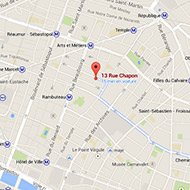Florent LAMOUROUX
Sèche-pleurs (Flower dryer)
19.05 - 09.06.2018
Under the shimmering black stretched skin, strange equivocal shapes emerge, whose sexual charge - albeit accidental according to the artist confidence - nevertheless denotes the principle of impulse on which rests the attractiveness of the "sèche-pleurs", these junk toys arranged at the cash registers of the shops, watching for the whim of a child, and which Florent Lamouroux seizes here.
Embalmed in their own plastic, these low-end products find themselves animated by a vital impulse that is both poetic and anguishing. A confusion between desire and envy that also poses the terms of a broader debate on the capacity of art to re-enchant the world and to overcome the materialism of our societies.
This shift from the mass-produced object to a unique object of art, with increased value, finds its exact opposite in the "Autoproduction" serie. The principle is based on the multiplication of an original form, created by embalming the artist's body in an assembly of rubbish bags and adhesive tape and as self-reproducing to infinity. The installation thus develops a more metaphysical discourse on the human condition. Each moulding indeed appears as a striking stage in the process of reification of the individual, impotent but nevertheless filled with a tenacious will to come out of oneself and to free oneself from the norms that hinder it; debating in vain in the plastic exuvia that constrains it and under which nothing remains: an empty being, a body to be taken. The lull here is taking on the finery of dehumanization.
From tortured figures to indolent replicas - some hanging on the wall and ready to sell - the sculptures that make up Florent Lamouroux's installation evoke the process of standardization (of goods and behaviours). The artist explores psychological springs and the impact of marketing strategies developed to subjugate the individual to the objectives of consumption, given today as the horizon of all things.
If the whole thus carries a critical glance on our alienation to market logics, it remains nonetheless attached to other themes dear to the artist, whose reflection borrows simultaneously from the lexicon of (industrial) production and (artistic) creation. In doing so, Florent Lamouroux skilfully manages to articulate the packaging of consumer goods and the human condition, physical and ideological commitment, the production chain and life cycle, the singularity of the portrait (that of the artist who serves as a model for the various sculptures) and the standardization of his replicas.
Because finally, it is also a question of identity and the difficulty for the artist to give a sensitive vision: how to summarize, in one gesture, all the variations of a being? How to represent the successive metamorphoses? How to fix the expression of a body at different stages in time? An artist's pitfall, which Albert Camus resolved by the need to sum up in one style this diversity of aspects of human life: "The greatest and most ambitious of all the arts, sculpture, strives to fix in three dimensions the fleeing figure of man, to bring back the disorder of gestures to the unity of the great style. The sculpture does not reject the resemblance that it requires. But she is not looking for her first. What she seeks, (...) it is the gesture, the mine or the empty gaze that will sum up all the gestures and all the looks of the world. His purpose is not to imitate but to stylize, and to imprison in meaningful expression, the fleeting fury of bodies and the infinite twirling of attitudes. (Albert Camus, L'homme révolté, 1951).
There is a fine line between style and standard. Florent Lamouroux knows this well, who manages to walk, without losing balance, on the thread that separates the freedom of the creator from the enslavement of the creature.
Thibault Bissirier, April 2018


